Don't mention Beeswax v SR to Blue58 LOL!
Blue58???
What do you mean??
Don't mention Beeswax v SR to Blue58 LOL!
Blue58 here, aka Barry, who went thru a long and arduous process deciding btwn these two fuses.
Hi Esotar,I'm testing SGM Extreme.
I used some fuses to Extreme.
The result is interesting.
Best Fuse for SGM Extreme
1st. Beeswax Ultimate Fuse - 100%
2nd. Beeswax Super Fuse - 75%
3rd. Bundle Fuse - 60%
4th. Synergistic Research Blue Fuse - 55%
In case of EVO, Blue fuse is the best.
But in case of Extreme, Blue fuse makes Extreme lose dynamic and bass sound's power.
The best cost-effective fuse is bundle fuse.
It's very nice~!
Hi Esotar,
Interesting result and as spiritofmusic said, it was a long decision. Reason being the Blue needs over 400 hrs to show its strength whereas the Beeswax is pretty good from the start. I settled on the Blue for the SGM while using Beeswax elsewhere. It would be interesting to see if your impression changes with time.
And don’t forget to use a SOTA power cord preferably with Bocchino plugs
The MSB doesn't upsample, it plays the native rate of the file
Dacs like the dCS Vivaldi/upsampler do upsample .....
It is something I find difficult to understand. Just consider non upsampled redbook, to keep things simple. How can computer latency affect data streams at such low data rates?
Thank you for asking as I would like to propose there is no "problem" in the actual data stream. Data errors almost never occur, if at all. This is however a hard to explain topic. I'm trying to share some of the discoveries we made in this thread, but it's not easy to explain, so bear with me and please keep the questions coming if anything is unclear.
For the original SGM 2015 music server our primary focus was on reducing DAC filter quality influence by providing a higher quality (up sampled) data stream. Especially DSD DAC's could greatly benefit from this method and be provided with a means to convert every source format to DSD. Of course the end result would depend on how the DAC processes higher data rates, most DAC's use different filters for different sampling rates, or they can be user selected, so you would force the DAC to use, or be able to use a different filter this way. Some of the filters and up sampling algorithms provided by HQPlayer which we use for that purpose are so processor intensive you can most definitely not run it on for example a Roon Nucleus, let alone they will run in a DAC's FPGA. A good example it the Chord Dave which is all about high quality filters and boasts a very strong FPGA array but it cannot approach the filter algorithms quality HQPlayer can provide.
Fast forward to this day and age where DAC quality, and DAC filter quality technology has advanced significantly, especially in upper echelon R2R DAC's, we find ourselves in the situation that the benefit of pre-processing the data has either decreased or is gone altogether. Most of these simply sound best being fed native "bit perfect" data rates.
Here we get to the interesting part and your question: "How can computer latency affect data streams at such low data rates?" A natural companion to this question would be: "Why use so much processing power for such low data rates?"
"Low latency" is something computer audiophiles have been hunting since the early Logitech transporter/squeezebox days. I don't think anybody ever really knew why it sounded better, it's sought after in the studio recording scene, but obviously to avoid time related sync issues and audio stream interruptions, but not sound quality afaik. There are several tools available to measure a system's latency to this purpose (referred to as DPC latency, ISR routine execution time, interrupt to process latency etc). It's generally accepted that lower latency sounds better amongst computer audiophiles though.
As I attempted to explain in my previous post on the subject, lowering latencies reduce active processing times. You can view latency as a roadblock that you cannot pass until its removed. Or shifting your transmission into a gear before you can accelerate. During a latency "wait state", a processor, memory module or system bus data path is getting ready to accept data packets. It will be active though, drawing current, transmitting its unavoidable EMI and or RFI spectrum which any electrical component will do. With lower latencies we reduce overall system current draw, EMI, RFI and processing durations. Contrary to what you would expect, you can have lower current draw variations and net overall lower EMI / RFI emissions from higher processing power solutions being minimally loaded then from low processing power solutions being higher loaded. The general view that lower power servers generate less noise then higher power servers BECAUSE they consume less current is wrong in our experience. Of course there are a lot of variables in this equation as it's easier and cheaper to design a low noise power supply for lower current draw requirements so you may very well get better results from a low power solution, especially when using the same power supply. But this is not the design goal of the Extreme.
Now if we can agree on the hypothesis that introducing any type of component into your system can alter your system sound, not restricted to the signal it puts out, it will become a lot easier to explain more differences. No matter if it's a server, a cd transport, an amplifier, a cable, a fuse, a grounding or ground modulating device. In fact why don't we extend the definition of your system to your phone charger, your imac, your WIFI router or your new refrigerator?
Thanks.
Easy to understand - I have always considered the SGM2015 a custom product, not a general server.
Very true, but it seems all we have now is EMI / RFI emission …
Yes, we can agree that introducing some (sorry, not any ) type of component into our system can alter our system sound, not restricted to the signal it puts out .
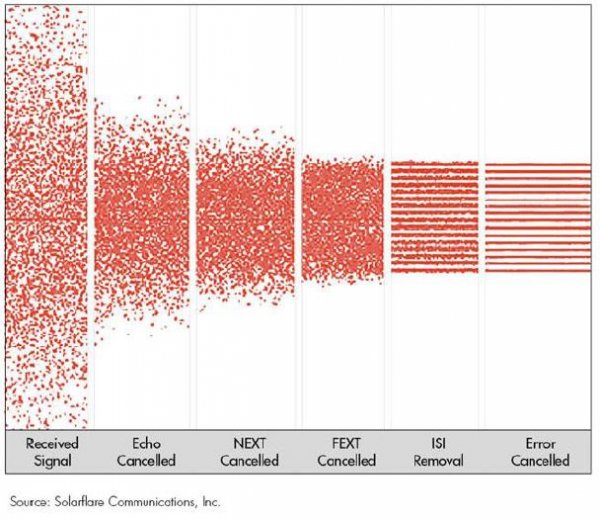
Moving on to Ethernet enabled DAC's. You will actually have a complete computing environment running an operating system, cpu, memory and a hardware and software networking stack, endpoint software like a upnp renderer, or Roon endpoint software. This is quite a bit more then a USB or AES/EBU receiver. It will most definitely draw more power and have higher EMI/RFI emissions.
But, from a usability point of view, it's absolutely great as it allows you to stream directly to your DAC from any other networking connected streaming source. However getting it to sound optimal requires quite a bit of tinkering in your networking environment. The often used selling point it nullifies the influence of your source is definitely not true. And I'm as of yet unconvinced it's the way to go to obtain maximum sound quality.
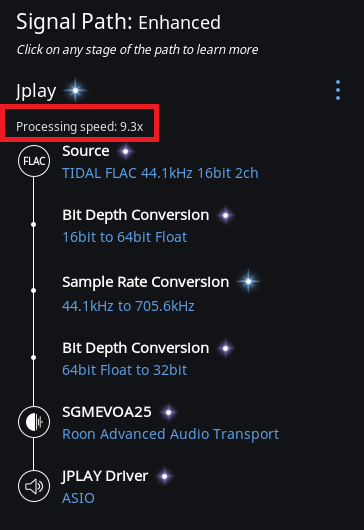
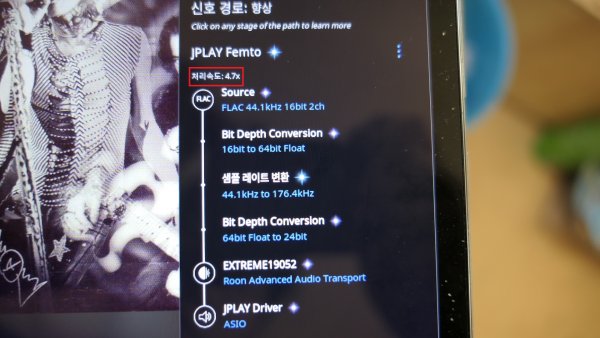
Extreme has many secrets~!
SGM Extreme and SGM 2015 EVO have different mechanism each other.
Digital components need to process quickly.
EVO is very fast.
Look at this picture :
View attachment 48912
Processing speed is 9.3x and average 9.8x
But SGM Extreme is very strange.
Please look at this picture :
View attachment 48913
Extreme's processing speed is just 4.7x.
This speed is inner storage files playback speed.
If I play files from NAS, processing speed is 3.4x.
If I use Tidal service, processing speed is 3.0x.
BUT
Extreme sound is flawless.
I never request Extreme setting to Emile.
Nevertheless, Extreme quality is super fantastic~!!
Although I'm not engineer, I know digital products must be fast, because of noise and vibration.
Audio signal have to be sent as soon as possible.
But SGM Extreme processing speed is very slow.
Extreme has many secrets~!
I guess he likes how that sounds with his particular DAC. Just because the Extreme was primarily designed for maximum bit perfect playback performance does not mean it cannot up sample if so desired. There is a whole range of DAC's out there which still benefit from being served an up sampled signal.Why is there upsampling? I need bit perfect.
I guess he likes how that sounds with his particular DAC. Just because the Extreme was primarily designed for maximum bit perfect playback performance does not mean it cannot up sample if so desired. There is a whole range of DAC's out there which still benefit from being served an up sampled signal.
See for example: http://archimago.blogspot.com/2019/02/measurements-look-at-hqplayer-325.html
And/or: http://archimago.blogspot.com/2019/02/musings-measurements-on-why-2496.html
Maybe for less able DACs. I don’t see any top end DACs like MSB, dcs or TotalDAC benefits from upsampling. BTW, I have been using HQPlayer on and off. I don’t think highly of HQPlayer upsampling capabilities.
There have been three interesting posts on Hiendy.com in Hong Kong from audiophiles visiting Ben Lau's showroom where the Extreme has been playing to the Totaldac D1-12 Mk 2
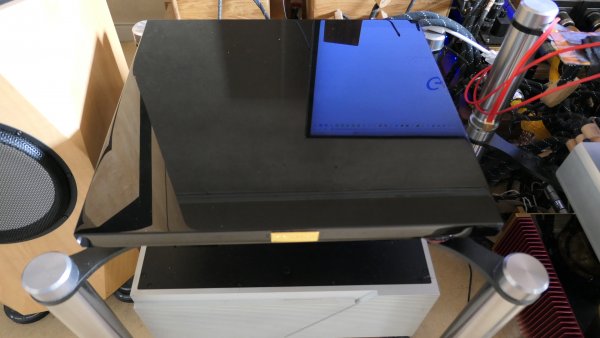
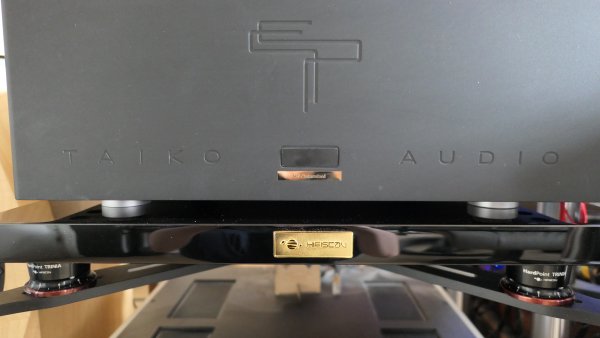
This part I do not understand. If they do not have SSD, how is music stored internally?Congratulations to Emile and Edward for their efforts to solve a number of digital audio problems. Achieve low latency with separate CPU for Roon and OS, fanless operation, no more SSD, use PCIe storage and not SATA (noise source ?) and so on. Countless problems have come up with solutions. Bravo.
.
| Steve Williams Site Founder | Site Owner | Administrator | Ron Resnick Site Co-Owner | Administrator | Julian (The Fixer) Website Build | Marketing Managersing |










